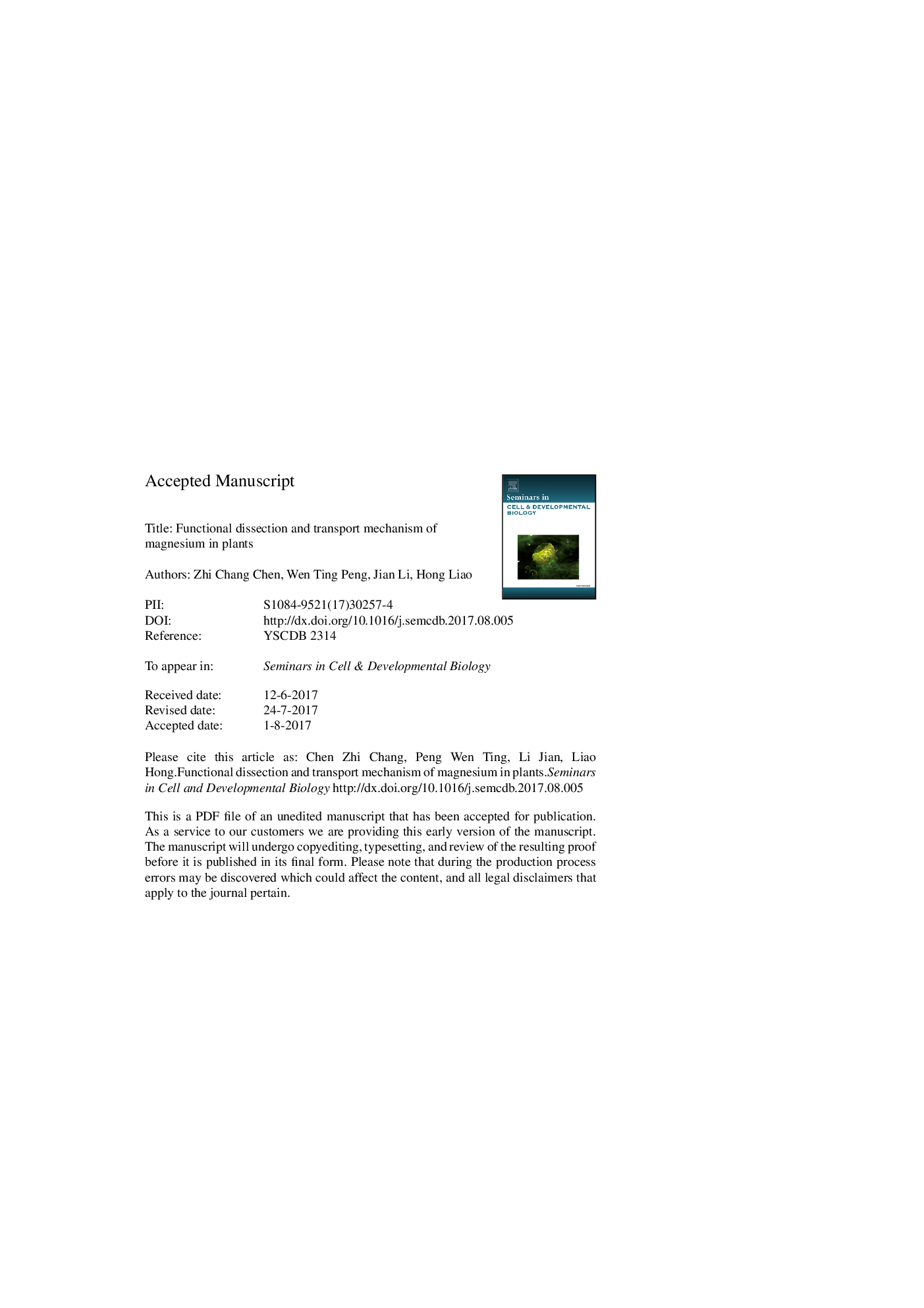| Article ID | Journal | Published Year | Pages | File Type |
|---|---|---|---|---|
| 8479811 | Seminars in Cell & Developmental Biology | 2018 | 39 Pages |
Abstract
Magnesium (Mg) is the second most abundant cation in plants, and, as such, is involved in numerous physiological and biochemical processes, including photosynthesis, enzyme activation, and synthesis of nucleic acids and proteins. Due to its relatively small ionic radius and large hydrated radius, Mg binds weakly to soil and root surfaces, and thereby is easily leached from soil. Mg deficiency not only affects crop productivity and quality, but also contributes to numerous chronic human diseases. Therefore, Mg nutrition in plants is an important issue in nutrition and food security. To acquire and maintain high concentrations of Mg, plants have evolved highly-efficient systems for Mg uptake, storage and translocation. Advances in the understanding of fundamental principles of Mg nutrition and physiology are required in order to improve Mg nutrient management, Mg stress diagnosis, and genetic marker assisted breeding efforts. The aims of this review are to highlight physiological and molecular mechanisms underlying Mg biological functions and to summarize recent developments in the elucidation of Mg transport systems in plants.
Related Topics
Life Sciences
Biochemistry, Genetics and Molecular Biology
Cell Biology
Authors
Zhi Chang Chen, Wen Ting Peng, Jian Li, Hong Liao,
